
Indoor plants are more than decorative accents—they’re natural allies in creating healthier living spaces. NASA studies highlight their ability to neutralize up to 85% of airborne pollutants , including formaldehyde, benzene, and xylene, while boosting oxygen levels and humidity. Beyond air purification, many plants offer therapeutic benefits, from stress reduction to immune support.
1. Spathiphyllum (Peace Lily): The Air-Purifying “Flower of Happiness”

Overview
Known as the “female happiness” or “flower of peace,” spathiphyllum boasts elegant white blooms and air-cleansing prowess.
Key Benefits
- Toxin Removal: Absorbs formaldehyde, acetone, and xylene from furniture, carpets, and cleaning products.
- Humidity Boost: Releases moisture through broad leaves, combating dry air.
- Mood Enhancement: Reduces stress with its serene appearance.
Ideal Placement
- Living rooms or offices with indirect light.
Pros & Cons
- Pros: Low maintenance, pet-safe, year-round blooms.
- Cons: Overwatering risk; drooping indicates thirst.
Care Tips
- Water weekly; keep soil moist but not soggy.
2. Chlorophytum (Spider Plant): The Natural Air Filter

Overview
Resilient and fast-growing, chlorophytum thrives in diverse conditions with arching green-and-white leaves.
Key Benefits
- Formaldehyde Neutralizer: Targets toxins from insulation and tobacco smoke.
- Oxygen Production: Releases oxygen overnight, improving sleep quality.
Ideal Placement
- Bedrooms or kitchens with moderate light.
Pros & Cons
- Pros: Pet-safe, tolerates neglect.
- Cons: Brown leaf tips in dry air.
Care Tips
- Water every 10–14 days; mist occasionally.
3. Ficus (Rubber Plant/Weeping Fig): The Immunity Booster
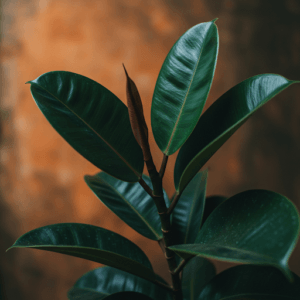
Overview
Ficus varieties, like the rubber plant, combine air-purifying power with glossy foliage.
Key Benefits
- Microbe Inhibition: Releases phytoncides to combat bacteria.
- Toxin Absorption: Filters formaldehyde, benzene, and trichloroethylene.
Ideal Placement
- Living rooms with bright, indirect light.
Pros & Cons
- Pros: Long-lived, stylish.
- Cons: Toxic to pets; cold-sensitive.
Care Tips
- Water when topsoil dries; clean leaves monthly.
4. Aloe Vera: The Nighttime Oxygen Factory

Overview
A succulent renowned for its medicinal gel and oxygen-rich output.
Key Benefits
- Formaldehyde Fighter: Targets toxins from pressed-wood furniture.
- First-Aid Uses: Gel soothes burns and skin irritations.
Ideal Placement
- Bedrooms or sunny windowsills .
Pros & Cons
- Pros: Drought-tolerant, medicinal.
- Cons: Toxic if ingested.
Care Tips
- Water every 3 weeks; avoid standing water.
5. Chamaedorea (Bamboo Palm): The Tropical Air Purifier

Overview
A compact palm that adds tropical flair while filtering pollutants.
Key Benefits
- Toxin Blocker: Removes formaldehyde, benzene, and CO2.
- Humidity Regulator: Eases dry skin and respiratory issues.
Ideal Placement
- Bathrooms or shaded corners .
Pros & Cons
- Pros: Pet-safe, thrives in humidity.
- Cons: Needs consistent moisture.
Care Tips
- Keep soil damp; mist weekly.
6. Dracaena (Dragon Tree): The Toxin Remover
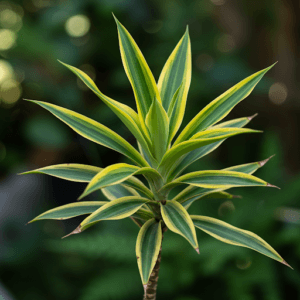
Overview
Architectural plants like Marginata and Warneckii offer striking foliage.
Key Benefits
- Toxin Absorption: Targets formaldehyde, benzene, and xylene.
- Stress Reduction: Adds vertical greenery.
Ideal Placement
- Offices or living rooms with moderate light.
Pros & Cons
- Pros: Drought-tolerant, modern aesthetic.
- Cons: Toxic to pets.
Care Tips
- Water every 2–3 weeks; let soil dry.
7. Lucky Bamboo (Dracaena Sanderiana): The Symbol of Prosperity
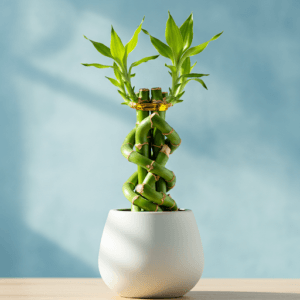
Overview
A Feng Shui favorite grown in water or soil, symbolizing good fortune.
Key Benefits
- Toxin Filtration: Removes carbon monoxide and formaldehyde.
Ideal Placement
- Desks or shelves with indirect light.
Pros & Cons
- Pros: Pet-safe (hydroponic), adaptable.
- Cons: Root rot risk in soil.
Care Tips
- Change water weekly; use filtered water.
8. Golden Pothos (Epipremnum Aureum): The Resilient Purifier
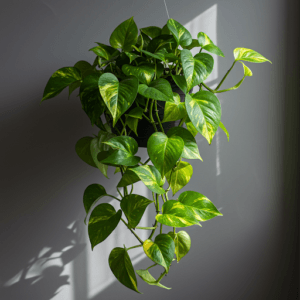
Overview
A trailing plant with heart-shaped leaves, perfect for beginners.
Key Benefits
- Air Cleaning: Filters formaldehyde, benzene, and carbon monoxide.
Ideal Placement
- Hanging baskets in low to moderate light.
Pros & Cons
- Pros: Fast-growing, easy propagation.
- Cons: Toxic to pets.
Care Tips
- Water when soil is dry; trim leggy vines.
9. English Lavender: The Stress-Relief Champion

Overview
Fragrant lavender with calming purple blooms and aromas.
Key Benefits
- Anxiety Reduction: Improves sleep and reduces stress.
Ideal Placement
- Sunny windowsills with airflow.
Pros & Cons
- Pros: Medicinal, deters pests.
- Cons: Requires full sun; not pet-safe.
Care Tips
- Water deeply but infrequently; prune after flowering.
10. Air Plants (Tillandsia): The Soil-Free Marvels

Overview
Epiphytic plants that absorb moisture through leaves.
Key Benefits
- Air Purification: Captures allergens and particles.
Ideal Placement
- Bathrooms or kitchens with humidity.
Pros & Cons
- Pros: No soil needed, pet-safe.
- Cons: Requires frequent misting.
Care Tips
- Soak weekly; ensure airflow.
11. Dipladenia Pink (Mandevilla): The Blooming Beauty
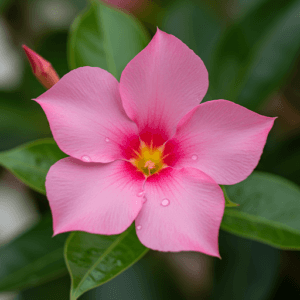
Overview
A flowering vine with vibrant pink trumpet-shaped blooms.
Key Benefits
- Air Freshening: Releases a subtle, sweet fragrance.
Ideal Placement
- Sunny balconies (6+ hours of sun).
Pros & Cons
- Pros: Long blooming period.
- Cons: Toxic to pets; needs trellis.
Care Tips
- Water when topsoil dries; fertilize monthly.
12. Garden Mum (Chrysanthemum): The Seasonal Air Cleaner

Overview
A flowering plant known for air-purifying prowess.
Key Benefits
- Toxin Removal: Filters ammonia, benzene, and formaldehyde.
Ideal Placement
- Sunny spots (indoors or outdoors).
Pros & Cons
- Pros: Affordable, colorful.
- Cons: Short indoor lifespan.
Care Tips
- Water at the base; repot annually.
13. French Marigold: The Natural Pest Repellent

Overview
A compact flowering plant that deters pests.
Key Benefits
- Pest Control: Repels mosquitoes and aphids.
Ideal Placement
- Sunny windowsills .
Pros & Cons
- Pros: Edible flowers, easy to grow.
- Cons: Annual plant.
Care Tips
- Deadhead spent blooms.
14. Geranium zonal (Zonal Pelargonium): The “Scented Protector”
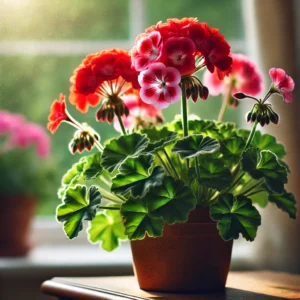
Overview
A flowering perennial with rounded leaves and vibrant blooms, often grown indoors for its fragrance and resilience.
Key Benefits
- Air Purification: Filters formaldehyde from carpets and fabrics.
- Mood Enhancement: Its citrusy scent is uplifting and reduces anxiety.
Magical Lore:
- In Victorian flower language, geraniums symbolize protection and comfort . They were placed in sickrooms to speed recovery.
- In Mediterranean folklore, geraniums are believed to ward off evil spirits when planted near doorways.
Rumor Alert:
- Wilting geranium leaves are said to predict unexpected guests —repot to revive!
Care Tips
- Water Needs: Moderate (water when topsoil dries).
- Light Needs: Full sun to partial shade.
- Pet Safety: ❌ Toxic (mildly irritant to pets).
- Special Tips: Deadhead spent blooms; avoid overwatering to prevent root rot.
15. Ranunculus (Buttercup): The “Symbol of Radiance”
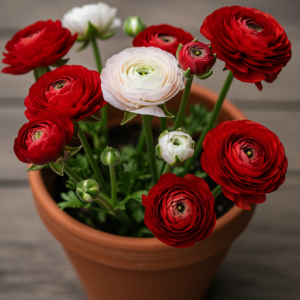
Overview
A showy flowering plant with layered petals, symbolizing charm and attractiveness.
Key Benefits
- Air Purification: Filters volatile organic compounds (VOCs) from paints and cleaners.
- Mood Enhancement: Bright blooms combat seasonal affective disorder (SAD).
Magical Lore:
- In Celtic mythology, ranunculus was linked to fairies , believed to attract joy and creativity.
- Victorian flower language associated it with humility and unrequited love .
Rumor Alert:
- A wilting ranunculus is said to signal unresolved romantic tension .
Care Tips
- Water Needs: Moderate (water when topsoil dries).
- Light Needs: Full sun to bright indirect light.
- Pet Safety: ❌ Toxic (causes oral irritation).
- Special Tips: Avoid wetting foliage to prevent mildew; discard faded blooms.
Plants with Magical Properties
Care Requirements for Health-Boosting Plants
Which Plants Can Be Grouped?
Plants to Avoid Grouping Together
Incorporating these plants into your home isn’t just about aesthetics—it’s a step toward holistic well-being. From the oxygen-boosting aloe in your bedroom to the toxin-fighting ficus in the living room, each plant plays a unique role. Remember to consider light requirements, watering schedules, and pet safety.
Final Tips:
- Group plants to amplify humidity and air purification.
- Use organic fertilizers to avoid chemical residues.
- Monitor for pests and adjust care routines seasonally.
Transform your space into a sanctuary of health—one plant at a time. 🌿